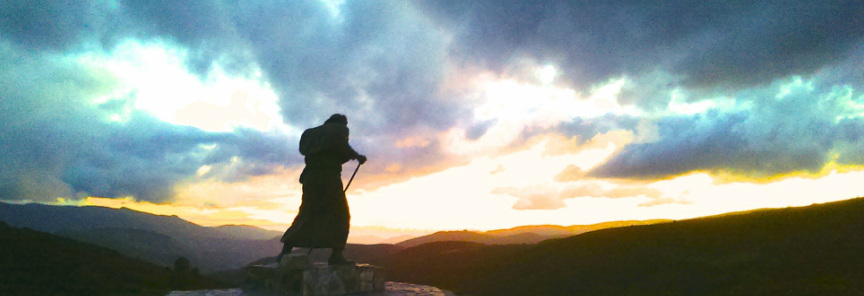History of the Camino
Sing The Camino follows the Frances route of the Way of St James. Legend holds that after the martyrdom of St James in Jerusalem in AD44, his remains were transported to Finisterre, considered the end of the earth, to be buried. In 813 a star is said to have led a Galician shepherd to the grave. The discovery was confirmed by the local Bishop after which King Alfonsso II ordered the construction of a cathedral in honour of St James to house the Apostles remains.
St James is said to have appeared on horseback at the battle of Clavijo in 844 and helped defeat the Moors. This lead to St James being crowned the patron saint of Spain and Santiago de Compostella becoming one of the most popular Middle Ages pilgrim destinations alongside Jerusalem and Rome.
The Frances route has pre-Christian history. Much of the path was part of early Roman trade routes. Earlier still, the Celts who had settled in north western Spain found significance in the path that lead to the end of the world. This tradition is continued by many pilgrims today who continue their Camino to Cape Finisterre.
For more information http://www.caminoguides.com/history.html
St James is said to have appeared on horseback at the battle of Clavijo in 844 and helped defeat the Moors. This lead to St James being crowned the patron saint of Spain and Santiago de Compostella becoming one of the most popular Middle Ages pilgrim destinations alongside Jerusalem and Rome.
The Frances route has pre-Christian history. Much of the path was part of early Roman trade routes. Earlier still, the Celts who had settled in north western Spain found significance in the path that lead to the end of the world. This tradition is continued by many pilgrims today who continue their Camino to Cape Finisterre.
For more information http://www.caminoguides.com/history.html
